|
Spanish
Blue Steel

M1913
& M1913/16 Campo Giro
By Cliff Carlisle
In the 19th century
the Spanish military placed very little value on the pistol and considered
them as a secondary weapon. By the beginning of the 20th century
it was obvious to them that the rest of the major military powers were
evaluating & adopting semi auto pistols for their military forces.
After a series of
trials the decision was made to adopt the Theodor Bergman Mars Pistol #6
as the Pistola Bergmann de 9mm Modelo 1903 as a service pistol. This
pistol was chambered for the Bergman Bayard cartridge, a 9X23 that the
Spanish called the 9mm Largo (Long) to differentiate it from the 9X19 Luger
round. After evaluating the first few pistols received the Spanish
military requested changes in the design of the safety. These changes
resulted in the M1908 Bergman. It was adopted by Spain in 1909.
The Spanish military issue Bergman Bayard M1908 pistols have the army acceptance
stamp of a 3 pointed star in a circle stamped on the frame & slide.
While this search
for a military pistol was going on Don Venancio Lopez de Ceballos y Aguirre,
Conde del Campo-Giro, was working on a pistol of his own design.
The Count of Campo-Giro was a retired Spanish army Lieutenant-Colonel.
The M1904, his first design to have a prototype made, was in 9mm Largo
and was tested by the military. This design was modified into a locked
breech pistol, also in 9mm Largo. 25 of these were tested by the
Spanish military as the M1910 but it was not adopted. This model
was further modified into a blow back design that used a heavy recoil spring
& a buffer instead of a locked breech. This design was adopted
by the Spanish military as the Pistola Campo-Giro, de 9mm, mod. 1913 on
24 September 1912.
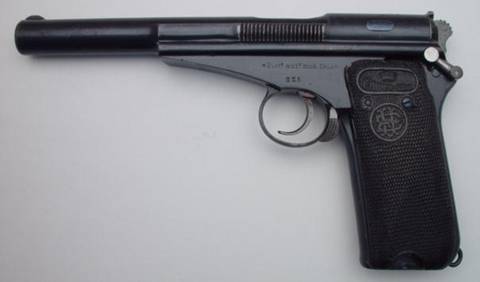
The M1913
Campo Giro. This pistol had a unique magazine release. The
lever located behind the trigger guard is the magazine release. Pushing
it from left to right would release the magazine. Only 1300 of the
M1913s were produced making it a fairly rare pistol.
During the production
of this model the Count was working on improvements to the design.
The magazine release was moved from behind the trigger to the bottom of
the left grip frame in the magazine cut out, the frame design was changed
to eliminate the step (in the photo above note the step behind the magazine
release & above the crown in the grip), the grips were changed to be
retained by 2 screws instead of 1 & the shape & design of the safety
was changed. The redesigned pistol incorporating these features was
adopted as the Pistola Campo-Giro, de 9mm, mod. 1913-16.
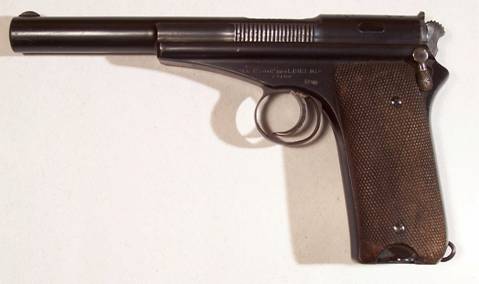
The M1913/16
Campo Giro, left side view.
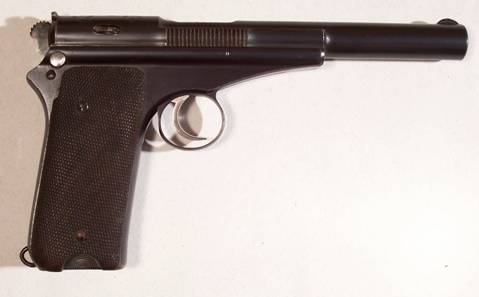
Right side
view.
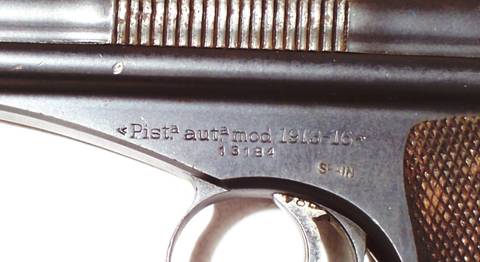
Photo of
the markings stamped on the left side of the frame. The Spain marking
was a requirement of the US 1890 Trade Act that required all firearms imported
into the US to be stamped with the country of origin. The Act was
amended in 1923 to require “Made in” to be added before the country of
origin. This pistol, from Astra records, was manufactured late in
1919 & delivered to the Spanish military on 5 January, 1920.
From the Spain marking, instead of the Made in Spain, it was imported into
the US prior to the 1923 change in the trade act.
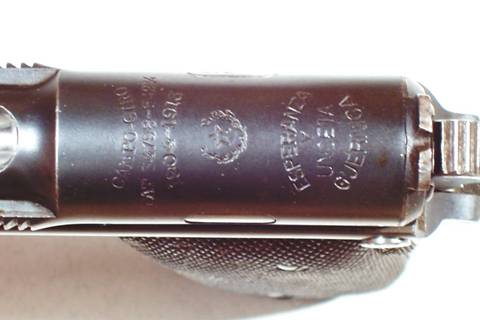
Photo of
the marking stamped on the top rear of the slide. These markings
are the same on both the M1913 & the M1913/16. Note that the
rear sight is part of the pistols bolt.
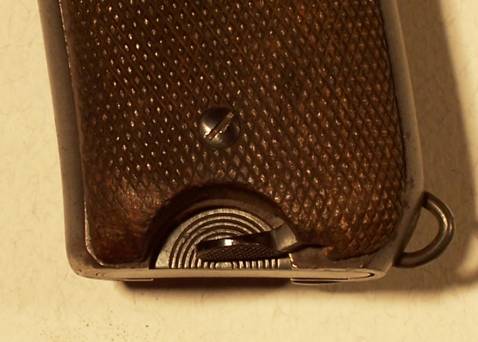
Photo of
the re-located magazine release. This is actually very handy.
The left thumb pushes the release up as the thumb & finger grasp the
serrations on the bottom of the magazine body and pull it out.
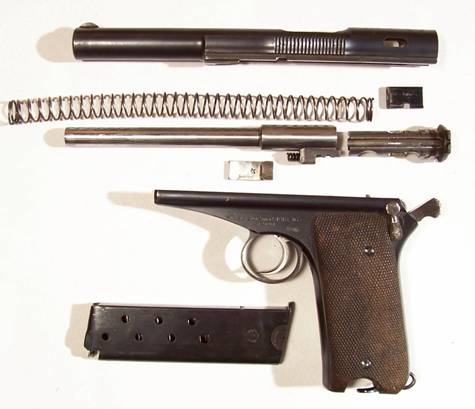
Photo of the M1913/16
disassembled. Note the size of the recoil spring & the buffer
spring & plate under the barrel. The pistol is easy to take apart
if you have 3 hands. The locking wedge is shown between the slide
& bolt. This is beat up and/or scratched on most of the pistols,
including this one. To remove the wedge the firing pin must be pushed
in to free it from the notch in the wedge. If this is not done,
the wedge will not come out. For disassembly, make sure the magazine
is empty & no round is in the chamber. Insert the magazine until
it locks in place. Pull the slide to the rear. The magazine
operated slide stop will hold the slide to the rear. Using all 3
hands, hold the pistol, use a tool to push in the firing pin as far as
it will go & with a different tool push the wedge out from right
to left. After the wedge is removed the slide must be pulled to the
rear just enough (about 1/16”) for the bolt to clear an internal lug.
The rear of the bolt includes the rear sight. While holding the slide
to the rear this 1/16”, use the sight to rotate the bolt 90 degrees counter
clockwise & then let the slide return to the locked position.
Now, tightly grip the slide & frame with one hand. The recoil
spring is strong. Place your second hand over the rear of the slide
to catch the bolt. With your third hand, remove the magazine.
If you are holding on tight with all hands, none of the parts will fly
across the room. Reassemble in reverse order!
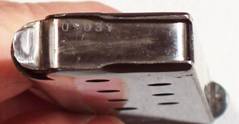 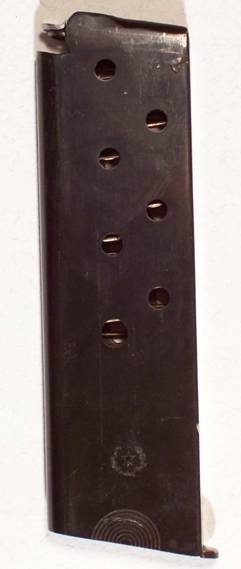
The magazine
has 2 unusual features. The serial number is applied to the follower
instead of the magazine body and the tab normally found at the bottom front
of a magazine is located at the rear. It would appear that the sole
purpose of this tab is to prevent the magazine from going to far into the
frame. The magazine is removed by grasping the semi circular serrations
on the sides at the bottom.
By 1920 the Spanish
military had decided that a more modern semi auto pistol was needed.
After more trials the Astra 400 was adopted as the M1921. Of the
original 1300 M1913 Campo Giro pistols produced only 960 were delivered
to the military. These were all received by August, 1914. The
first M1913/16 pistols were contracted for in December 1916 & delivered
in 1917. The last ones were made in 1919 & delivered to the military
on 5 January 1920. A total of 13,625 were produced with 13,178 going
to the Spanish military. The Spanish military procured ones have
the 3 pointed star in a circle proof stamped on the left tang. Both
models were limited production & very collectible.
References;
Handguns of the World by Edward C. Ezell
Astra Automatic Pistols by Leonardo M. Antaris
|